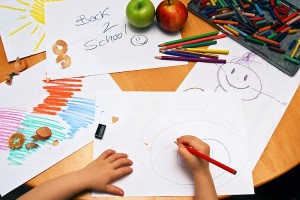
Every private elementary school has its own set of expectations – academic, social, behavioral. When touring schools and considering them for your child and your family, it is helpful to try to get a sense of a school’s expectations so you can determine whether your child will thrive in the school.
While it is easy to see this as dividing into competitive vs. cooperative school environments, it is not quite that simple. It is a bit more of a spectrum between, for example, a school that sets up a strictly competitive model and believes that it is desirable for students to rank themselves and each other in all things. Another type of school might not have grades, keep score, or do summative evaluations of any kind. What is important is to find the school that fits your child.
Expectations are important – children do not know what they can achieve in a vacuum – they need something to measure up against in most things. A standard of excellence gives them this awareness. But these standards must be presented carefully and they must be realistic. What often becomes problematic is that children internalize this standard as a measure of their success or failure. This sets in motion the possibility of constructing an unhealthy competitive situation that can result in all kinds of issues of perfectionism, self worth problems, as well as insider/outsider feelings.
There is a rational way to set expectations without sacrificing the self esteem of our children. If we instill in them the concept of “personal best” and set this as the standard for our expectation of them, they are able to learn to self monitor their achievements in light of their own effort and capacity rather than the achievement of someone else or some vague idea of what excellence might be. This allows children to be challenged while remaining realistic and feel good about their efforts toward this goal. This is when you know that the bar has been set just right.
I have seen this ethic folded into the philosophy of schools that offer students a strong and competitive athletic program with great results. Students could push themselves as far as they were able and still champion the efforts and achievements of their classmates. This same idea was present in the classroom and evident in the caring and supportive relationships among the students and with their teachers.
Of course there needs to be an ongoing dialogue between parents and teachers or coaches and the children in order for this concept to take hold and be effective. Consistently helping your child understand the idea of effort, persistence, and practice, and its value, will help him/her develop these skills. When it comes to looking at and choosing a school, try to get a grasp on how each school interprets this concept of expectations.
Anne Simon is the co-author of Beyond The Brochure: An Insider’s Guide To Private Elementary Schools in Los Angeles. She has more than 30 years of experience as a head of school and private school administrator. She is the former head of the Wildwood Elementary School and the former dean of the Crossroads Middle School. Anne’s daughter, a veterinarian, is a graduate of Crossroads.
